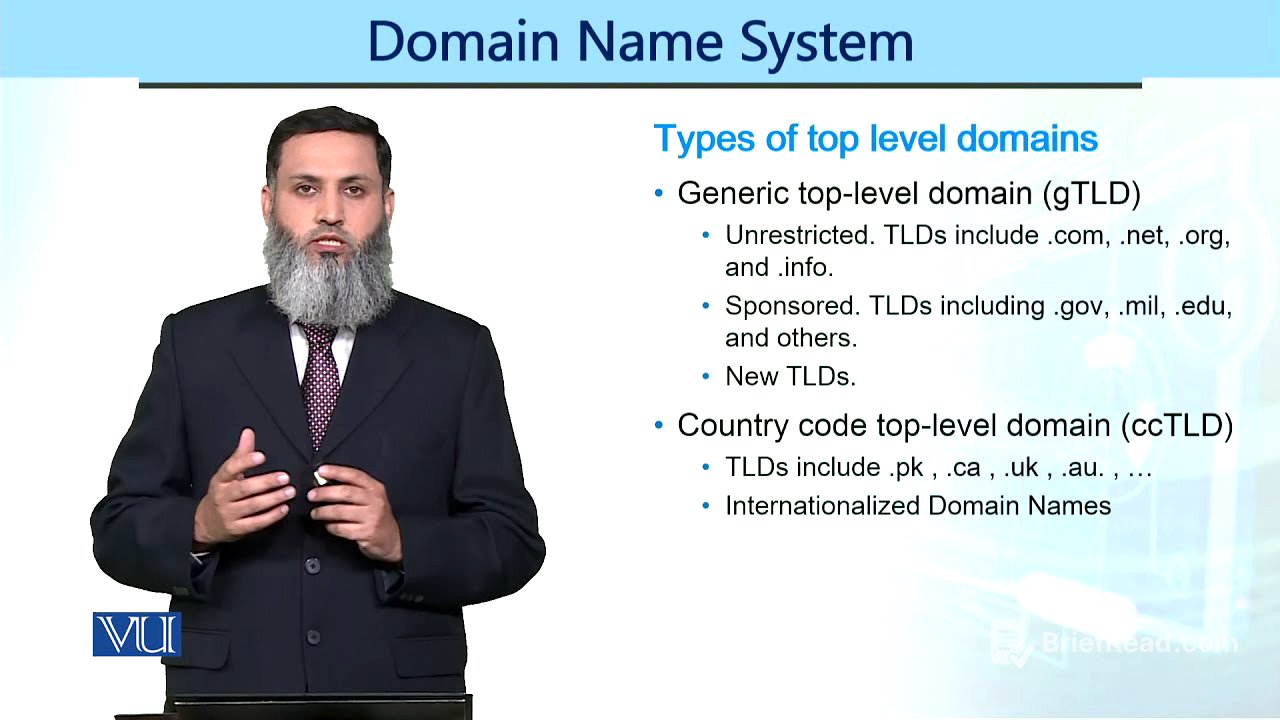TLDR;
This video provides an overview of the Domain Name System (DNS), explaining how domain names are structured, registered, and resolved to IP addresses. It covers top-level domains (TLDs), second-level domains, and the process of registering a domain. The video also explains how DNS servers work together to find the IP address associated with a domain name, including local DNS servers, root name servers, and TLD name servers.
- Domain names are structured hierarchically, with top-level domains (TLDs) like .com and country-specific domains like .pk.
- Domain registration involves contacting a registrar, who then registers the domain with the appropriate top-level registry.
- DNS resolves domain names to IP addresses through a hierarchical system of servers, starting with local DNS servers and potentially querying root name servers.
Introduction to Domain Name System [0:00]
The video introduces the Domain Name System (DNS) and its role in translating human-readable domain names into IP addresses that computers use to communicate. When a user enters a URL into a browser, the DNS system works behind the scenes to find the correct IP address for the website. The presenter explains that the domain name system is essential for accessing websites by translating domain names into IP addresses.
Understanding Domain Name Structure [0:06]
The structure of a URL is explained, breaking it down into its components. A URL consists of several parts, including the top-level domain (TLD), second-level domain, and subdomains. Top-level domains (TLDs) are the suffixes like .com, .org, or country codes like .pk. The part before the TLD is the second-level domain, which is the name of the website. Subdomains, like "www" or other prefixes, can be added to further organize the website. The presenter uses "wn.com" as an example, identifying ".com" as the top-level domain and "wn" as the second-level domain.
Types of Top-Level Domains (TLDs) [2:19]
The video describes different categories of top-level domains (TLDs), including generic TLDs like .com and country-specific TLDs. Generic TLDs are further divided into unrestricted TLDs, which anyone can register, and restricted TLDs, which require specific qualifications. Country-specific TLDs are associated with particular countries, such as .pk for Pakistan or .uk for the United Kingdom. The presenter also mentions internationalized domain names (IDNs), which allow the use of non-English characters in domain names.
Domain Registration Process [4:52]
The process of registering a domain name is outlined, involving contacting a domain registrar. To register a domain, one must contact a domain registrar, which is a company that handles the registration process. The registrar collects the necessary information and registers the domain with the appropriate top-level registry. Once the registration is complete, the information is added to the DNS system, allowing the website to be accessed.
How DNS Resolves Domain Names to IP Addresses [6:09]
The video explains how the Domain Name System (DNS) resolves domain names to IP addresses. When a user enters a domain name, the browser first checks its local cache for the IP address. If the IP address is not found locally, the browser queries the operating system's DNS resolver, which then queries a local DNS server. If the local DNS server does not have the IP address, it queries a root name server, which directs it to the appropriate top-level domain (TLD) name server. The TLD name server then provides the IP address of the authoritative name server for the domain, which finally provides the IP address of the website. The presenter details the steps involved in resolving a domain name to an IP address, starting from the local cache and progressing through various levels of DNS servers.









